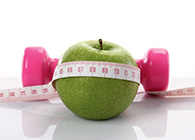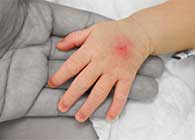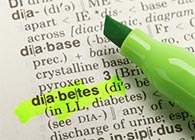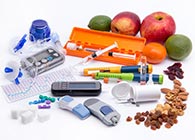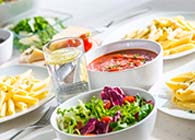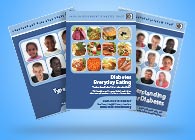Salt reduction is beneficial for people with Type 2 diabetes
A new study has shown that a modest reduction in salt intake could reduce the risk of strokes, heart attacks and kidney disease in people with early onset Type 2 diabetes. A reduction in salt intake led to a significant fall in blood pressure and urinary albumin excretion, which is a marker of cardiovascular disease. The reduction in urinary albumin excretion may have additional benefits in reducing cardiovascular disease above those on blood pressure.
People with Type 2 diabetes and raised blood pressure have at least a twofold increased risk of developing cardiovascular disease compared to those who do not have Type 2 diabetes or glucose intolerance.
This study is the first time that has conclusively shown that salt reduction is effective at lowering blood pressure in people with Type 2 diabetes or glucose intolerance, so it is now important that everyone with these two conditions are given advice about how to reduce their daily salt intake.
Salt intake should be at least less than 6g per day. (Hypertension, May 11th 2016)
How to lower salt intake
Reducing salt intake is good for everyone. Around 75% of the salt we eat is already in everyday foods such as bread, breakfast cereal and ready meals. Wherever you are eating, at home or out, don’t add salt to your food automatically –taste it first. Many people add salt out of habit, but it’s often unnecessary and your food will still taste good without it.
Salt is an acquired taste that can be unlearned. It takes about 6-8 weeks to get used to eating food with much lower quantities of salt, but once done, you notice that foods like potato chips taste too salty.
- Use fresh, rather than packaged meats. Fresh cuts of beef, chicken and pork contain natural sodium but in much less amounts than in bacon or ham where extra sodium is added during processing, Choose reduced-salt unsmoked back bacon. Cured meats and fish can be high in salt, so try to eat these less often. If a food item keeps well in the fridge for days or weeks, that’s an indication that the sodium content is too high.
- Choose fresh fruit and vegetables, as they are very low in sodium. Tinned fruit and frozen fruits are also low in sodium. If you are going to buy tinned vegetables or pulses, choose the ones with low salt. When buying frozen vegetables, choose those labelled "fresh frozen" and do not contain added seasoning or sauces.
- Compare nutrition labels on food packaging as the sodium content is always listed. This can cut your salt intake because you can choose the pizza, ketchup, crisps or breakfast cereals that are lower in salt.
- Select spices or seasonings that do not list sodium on their labels, for instance choose garlic powder over garlic salt. Beware of the salt content in ready-made pasta sauces – tomato-based sauces are often lower in salt than cheesy sauces or those containing olives, bacon or ham. Soy sauce, mustard, pickles, mayonnaise and other table sauces can all be high in salt.
- Beware of products that don’t taste especially salty but still have high sodium content, such as cottage cheese.
Tips for cooking with less salt
There are lots of ways of adding flavour to your cooking without adding salt:
- Use black pepper as seasoning instead of salt – it’s good on pasta, scrambles eggs fish and soup.
- Add herbs and spices to pasta, vegetables and meat.
- Bake or roast vegetables to bring out the flavour.
- Make your own stock using cubes or granules or choose reduced salt products.
- Makes sauces using tomatoes and garlic.



